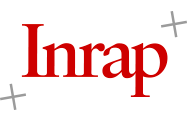
Bases de données textuelles
Brady Kiesling &
Elton Barker
Vendredi 20 novembre 2020, 16h-19h
Visioconférence : https://www.gotomeet.me/AncaDAN/geoarch
Par téléphone : +33 187 210 241
Code d’accès : 906-762-757
Conférence dans le cadre du séminaire « Géographie historique et géoarchéologie »
- Brady Kiesling
ToposText (Senior associate member, American School of Classical Studies, Athens)
Creating ToposText : De-Ontologizing as a Strategic Choice in Digital Humanities
ToposText is a very large library of ancient texts in English translation, assembled and indexed against a customized, Pleiades-based gazetteer, enriched with various secondary sources and links to the ancient Greek or Latin. My goal in creating this free application and website was to make the primary sources for ancient topography and history accessible to users on the site of the action, in manageable doses, while encouraging serendipitous contact with obscure as well as canonical ancient authors. The key was to scavenge and organize a critical mass of public-domain texts. Launching the application put me in contact with Digital Humanists, and my effort to convert gradually to a linked open data model makes me keenly aware of ToposText’s epistemological flaws, ontological aberrations, and idiosyncratic metadata. The paradox is that it was obliviousness to Digital Humanities as a discipline that made this project possible. How, then, do we harness the rapidly evolving insights of this new field to make genuinely useful digital tools ? Mindsets must evolve to match the technology.
- Elton Barker
Reader in Classical Studies, The Open University ; General Secretary, @PelagiosNetwork
A digital « journeying around » : annotating, mapping and linking Pausanias’s Description of Greece
Annotation is as old as writing itself. Among the first texts to be written down, Homer’s oral poems survive thanks first to Hellenistic scholars, whose comments and explanations formed the editions that come down to us, and then to later manuscript technology, which enabled the painstaking copying of both the texts and the notes associated with them. Just as the manuscript medium provided affordances for annotation, so too the digital revolution, which we are currently experiencing in our everyday life and research, has the potential to radically transform what and how (even why) we annotate.
In this presentation I reflect on the role and use of annotation in the Digital Humanities by focusing on two on-going initiatives. While various methods for, as well as kinds of, annotation can be applied to a digital document, Pelagios has established a process that uses semantic annotation of place references to connect heterogeneous materials and resources, and built a tool, Recogito, that enables the subject specialist to semantically enrich their documents without needing to know how to code. Using Recogito to identify, trace and explore the spatial form of, and the forms of space within, the second-century CE Description of Greece by Pausanias, the Digital Periegesis analyses that “thick” description and shows how Pausanias takes his reader on a virtual pilgrimage through an imaginary Greece, which exists not on the ground but in the text, in the memories and myths of local landscape(s).
Responsable : Anca Dan







